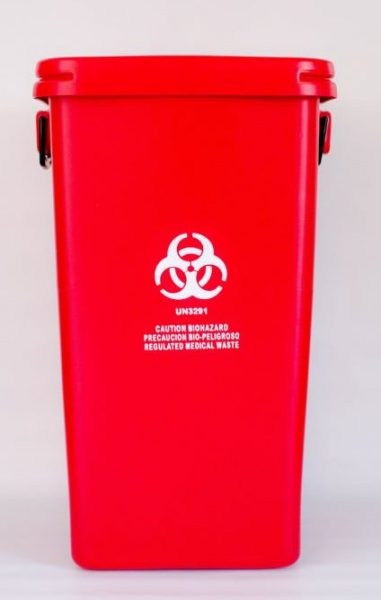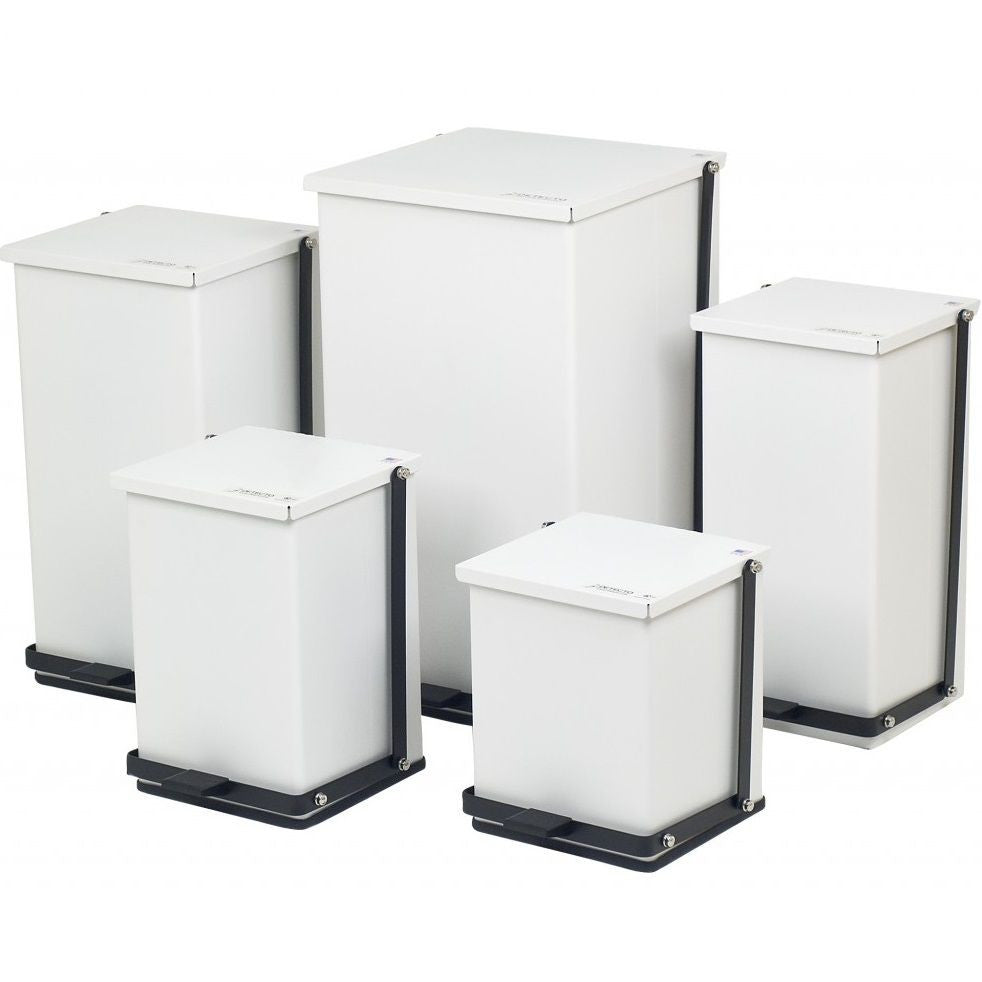Medical Waste Removal Proficiency: Where Service Excellence Fulfills Health And Wellness Specifications
Medical Waste Removal Proficiency: Where Service Excellence Fulfills Health And Wellness Specifications
Blog Article
Minimize Expenses and Optimize Safety: Effective Medical Garbage Disposal Techniques
Efficient medical garbage disposal approaches are crucial for healthcare facilities to decrease costs and make best use of safety and security. With the growing worry for ecological sustainability and the increasing number of laws bordering waste monitoring, it is crucial for healthcare organizations to embrace compliant and efficient methods. By implementing correct partition and categorization, reliable product packaging and labeling, risk-free transport and handling, effective therapy and disposal methods, and compliance with regulatory standards, healthcare centers can ensure the liable and risk-free management of clinical waste. In this discussion, we will check out each of these strategies thoroughly, offering insights and sensible suggestions for health care specialists to enhance their garbage disposal processes.

Proper Segregation and Categorization
Proper partition and classification are critical parts of reliable clinical garbage disposal methods, ensuring the safety of healthcare employees, the general public, and the environment - medical waste removal. medical waste disposal services with WasteX. By separating different sorts of clinical waste at the factor of generation, health care facilities can reduce the threat of cross-contamination and prospective harm to individuals and ecological communities
Among the essential elements in proper segregation is the recognition and category of medical waste. This includes classifying waste into different groups, such as contagious, hazardous, radioactive, or pharmaceutical waste. Each category needs details handling, storage space, and disposal techniques to avoid any damaging impacts on human health and wellness and the environment.
In addition, appropriate segregation likewise includes the use of color-coded labels and containers to plainly recognize and separate the different sorts of medical waste. This assists medical care employees and waste administration personnel to quickly identify and manage the waste suitably. Red containers may be used for transmittable waste, while yellow containers might be marked for unsafe waste.
Along with segregation, correct categorization likewise includes the appropriate packaging and containment of clinical waste. This guarantees that waste is safely stored and carried without posturing any type of dangers to individuals or the setting. Using watertight and puncture-resistant containers, in addition to effectively securing and classifying them, helps to prevent any type of accidental direct exposure or release of unsafe compounds.
Reliable Packaging and Labeling
Effective packaging and labeling play a critical role in ensuring the risk-free and reliable disposal of medical waste. Appropriate product packaging is vital to protect against leakage, breakage, or splilling throughout transportation and handling. It aids to reduce the risk of contamination and shields healthcare workers, waste monitoring employees, and the atmosphere from prospective threats.
Medical waste ought to be packaged in watertight and strong containers that are immune to pierce and breakage. These containers should be properly secured to protect against any leakage. Additionally, the product packaging needs to have the ability to hold up against the conditions of transport, consisting of temperature variants and harsh handling.
Identifying is similarly vital as it provides essential info concerning the components of the waste and any kind of possible dangers linked with it. The labels must include the name of the medical care facility, the kind of waste, and any unique handling instructions. Standardized and clear labeling makes sure that waste monitoring personnel can quickly identify and handle the waste appropriately.
Efficient product packaging and labeling likewise aid in the appropriate partition and categorization of medical waste. Clear labeling allows for easy recognition of various waste streams, such as infectious waste, sharps, or pharmaceutical waste. This helps in enhancing the disposal process and ensuring that the waste is treated or disposed of according to regulative standards.
Safe Transport and Handling
Ensuring the safe transportation and handling of clinical waste is of utmost importance in order to protect against any kind of prospective wellness and ecological threats. Clinical waste, such as sharps, polluted products, and pharmaceutical waste, need to be correctly packaged and dealt with to reduce the risk of exposure to unsafe substances and virus.
Moving medical waste calls for compliance with strict regulations and guidelines established by neighborhood authorities and ecological companies. These laws aim to protect the health and wellness and security of workers entailed in waste monitoring and stop the release of hazardous products right into the atmosphere.
To guarantee safe transportation, medical waste must be see post put in watertight and puncture-resistant containers that are appropriately sealed and labeled. These containers should be safeguarded in a method that prevents spills or damage during transportation (medical waste removal services). Additionally, it is vital to utilize specific lorries outfitted with proper safety and security functions to deliver medical waste. These vehicles need to have sufficient ventilation and be made to prevent leak or contamination.
Managing clinical waste likewise calls for appropriate training and adherence to safety and security protocols. Personnel included in the handling of clinical waste need to put on ideal individual safety tools (PPE) such as gloves, masks, and dress to decrease the risk of exposure. They should also follow rigorous hygiene methods to stop the spread of infections and make sure the secure disposal of waste.
Reliable Treatment and Disposal Approaches
Applying ideal treatment and disposal approaches is crucial in handling medical waste properly and minimizing potential health and wellness and ecological dangers. Clinical waste, which consists of sharps, transmittable products, chemicals, and pharmaceuticals, can position considerable hazards otherwise handled and taken care of effectively. There are several therapy and disposal approaches readily available that abide by regulatory standards and advertise secure practices.
One common approach is incineration, which involves burning the waste at high temperature levels. Incineration is effective in damaging virus and minimizing the volume of waste, however it can launch harmful pollutants right into the air otherwise appropriately managed. For that reason, it is crucial to utilize modern incinerators geared up with discharge control modern technologies.
An additional method is autoclaving, which makes use of heavy steam and stress to disinfect the waste. Autoclaving is effective in eliminating virus and lowering the quantity of waste, but it calls for cautious monitoring and maintenance to make certain appropriate functioning. The sanitized waste can then be my company safely gotten rid of in a landfill.
Chemical therapy is one more choice, which includes using anti-bacterials or various other chemicals to reduce the effects of virus. This approach is frequently utilized for liquid waste, such as laboratory samplings. It is essential to make use of ideal chemicals and comply with correct treatments to guarantee efficient treatment and avoid ecological contamination.

Compliance With Regulatory Guidelines
Complying with governing guidelines is necessary in guaranteeing proper compliance with clinical waste disposal practices. These guidelines are established to secure public health, prevent environmental contamination, and preserve workplace safety and security. Compliance with regulatory standards is crucial for medical care centers, as non-compliance can cause fines, fines, and reputational damages.
Regulative guidelines lay out the correct handling, storage space, transport, and disposal of clinical waste. They provide certain directions on packaging needs, labeling, and record-keeping. These standards likewise resolve the partition of various waste streams, such as sharps, infectious waste, and pharmaceutical waste. Health care centers should make certain that their waste monitoring techniques align with these standards to decrease the danger of direct exposure to dangerous materials and avoid the spread of infections.
To keep compliance, health care centers need to develop detailed waste administration programs that consist of staff training, regular audits, and continuous surveillance. It is necessary to keep updated with any updates or modifications to regulatory standards, as techniques may evolve with time. By staying informed and applying proper procedures, health care facilities can minimize the capacity for governing offenses and safeguard the health and safety and security of their personnel, individuals, and the surrounding area.
Conclusion
Finally, implementing efficient medical waste disposal approaches is crucial for maximizing and decreasing costs safety. Proper segregation and categorization, effective packaging and labeling, secure transportation and handling, and reliable therapy and disposal approaches are vital actions to guarantee conformity with regulative guidelines. medical waste removal services. By sticking to these approaches, healthcare centers can shield the setting and public health while additionally lowering economic problems related to clinical waste administration
By carrying out proper partition and classification, effective packaging and labeling, risk-free transportation and handling, efficient treatment and disposal approaches, and conformity with regulatory standards, healthcare centers can make certain the responsible and risk-free management of clinical waste. Red containers might be the original source made use of for contagious waste, while yellow containers might be marked for unsafe waste.
Clear and standard labeling makes certain that waste administration personnel can conveniently identify and manage the waste suitably. (medical waste disposal services with WasteX)
Clear labeling permits for easy recognition of different waste streams, such as transmittable waste, sharps, or pharmaceutical waste. These guidelines also deal with the segregation of various waste streams, such as sharps, infectious waste, and pharmaceutical waste.
Report this page